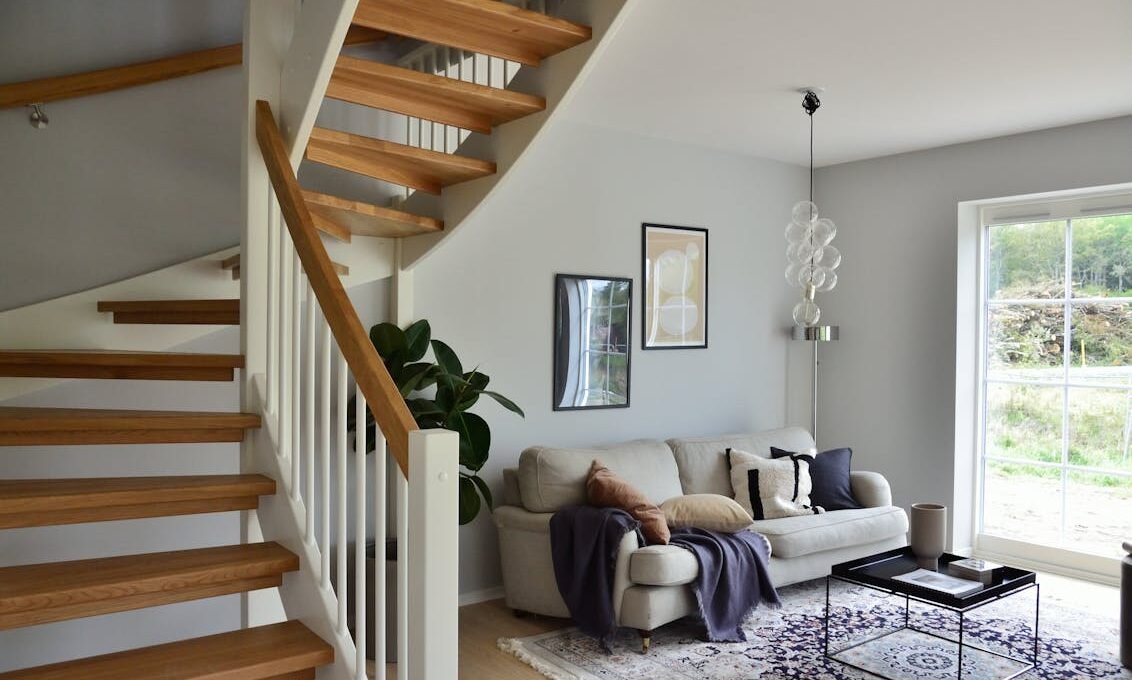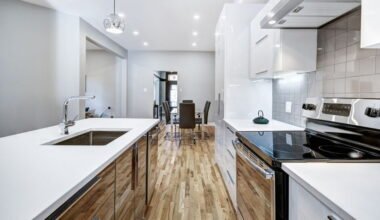In Hibbing, MN, homes are designed with more than style in mind. The weather plays a big role in how spaces are planned and used throughout the year. Cold winters demand warmth and insulation. Summers require airflow and cooling. A well-designed home meets those needs while still looking good and feeling comfortable.
Creating a functional space doesn’t mean giving up on aesthetics. The layout, materials, and small details work together to support daily routines. Whether you’re planning a remodel or starting from scratch, the goal is to make each room practical and enjoyable.
This article walks through key design tips for different rooms in your home. It focuses on making smart layout decisions that improve comfort without crowding the space. Thoughtful design goes a long way, especially when it fits your lifestyle and your climate.
Start with Climate Comfort: Temperature and Airflow Basics
Designing for comfort in Hibbing starts with understanding how your home handles temperature. Winters can be long and intense. Summers can bring humidity and heat. These swings mean you need a layout that supports proper airflow, insulation, and even appliance placement.
Plan around your heating and cooling systems. Don’t block vents with furniture. Choose window treatments that offer insulation in winter and sun control in summer. The placement of windows, doors, and ceiling fans all play into how your home maintains a steady temperature.
For those planning a new layout or renovation, it’s a good idea to bring in a local expert. If you’re planning a redesign or new build, it’s smart to coordinate early with an AC contractor in Hibbing, MN. They can help you align your layout with heating and cooling needs before walls and finishes are finalized. This step helps avoid changes later and keeps comfort at the center of your design.
Planning ahead with airflow and temperature in mind supports a home that feels balanced year-round. It also helps save energy and makes daily life more enjoyable, especially when each room is used differently throughout the year.
Living Room: Comfort Without Clutter
The living room is often the busiest space in a home. It’s where people relax, gather, and entertain. That makes it a great place to start when thinking about design choices that blend function and comfort.
Focus on the layout first. Arrange furniture so people can move around easily without squeezing through narrow gaps. Keep walkways open between seats, coffee tables, and shelves. A clear path helps the space feel open, even in smaller rooms.
Think about where vents and windows are. Avoid placing large furniture in front of airflow sources. This keeps the room from feeling stuffy during summer and too cold in winter. Light, breathable fabrics also work better year-round and are easier to maintain.
Use built-in storage when possible. A TV console with drawers or a window seat with storage inside helps cut down on clutter. Choose furniture that fits the space instead of oversized pieces that overwhelm it.
Lighting plays a big role here, too. A mix of natural light, ceiling lights, and floor lamps lets you adjust brightness for different times of day and different moods.
Kitchen: Functional Layout with Daily Use in Mind
The kitchen is one of the most-used rooms in the house, so it should feel easy to move around in. A good kitchen layout starts with flow. Group your sink, stove, and fridge in a way that allows you to cook, prep, and clean without taking too many extra steps. This makes cooking less stressful and more efficient.
Keep surfaces clear by using smart storage. Add drawer organizers, pull-out pantry shelves, or vertical racks to make the most of cabinets. You don’t need to expand your kitchen—just use the space better.
Lighting matters here, too. Bright task lighting helps when chopping or cooking. Warm overhead lights make the space feel welcoming during meals or gatherings. Place switches in easy-to-reach spots and think about under-cabinet lighting if your counters feel too dark.
Pick materials that stand up to daily wear. Quartz counters, tile backsplashes, and sealed hardwood floors combine durability with style. They hold up well and make cleanup faster.
Bedroom: Creating a Restful, Personalized Space
Your bedroom should be a place where you can relax and reset. A peaceful layout can help you sleep better and feel more comfortable every night.
Start with the bed. Position it so you have room to walk on both sides. Avoid putting it right under a window if you live in an area with strong temperature swings. Choose bedding that works for both cold and warm nights—layered blankets and breathable sheets work well.
Add soft textures to help the room feel cozy. Use rugs, curtains, and throw pillows to add warmth without making the room feel crowded. Go for a simple color palette that calms rather than distracts. Soft grays, muted greens, and warm neutrals create a peaceful mood.
Lighting is important here, too. Use blackout curtains to block out morning sun when needed. Add bedside lamps or wall-mounted lights to make reading easier. Dimmers give you more control over the lighting mood.
Sound also affects sleep. Thick curtains, rugs, and padded headboards can reduce noise in shared homes or apartments. If possible, avoid putting the bed near walls shared with noisy spaces like kitchens or bathrooms.
Bathroom: Small Space, Big Impact
Bathrooms might be smaller, but that doesn’t mean they’re less important. Good design here makes a big difference.
Think about how you move in the space. Keep towel hooks, shelves, and drawers within easy reach. Wall-mounted sinks or floating vanities open up floor space. Use mirrors to reflect light and make the room feel bigger.
Moisture can be a challenge, so use materials that stand up to steam and splashes. Tile, sealed wood, and anti-slip mats are smart choices. Keep cleaning simple by choosing finishes that don’t show water spots or stains easily.
Lighting matters here, too. Add task lighting around the mirror for grooming and softer overhead lights for general use. If the bathroom has a window, use it to bring in natural light—just add frosted film or shades for privacy.
Add personality with small details. A colorful towel, stylish soap dispenser, or plant can make the space feel more like home.
A well-designed home blends comfort with purpose. Each room should support how you live, not work against it. From temperature control to layout and lighting, every detail can make a space more functional and pleasant to use. Planning room by room helps you create a home that fits your routine and feels good year-round. Thoughtful design doesn’t have to be complex—it just has to match how you live.



